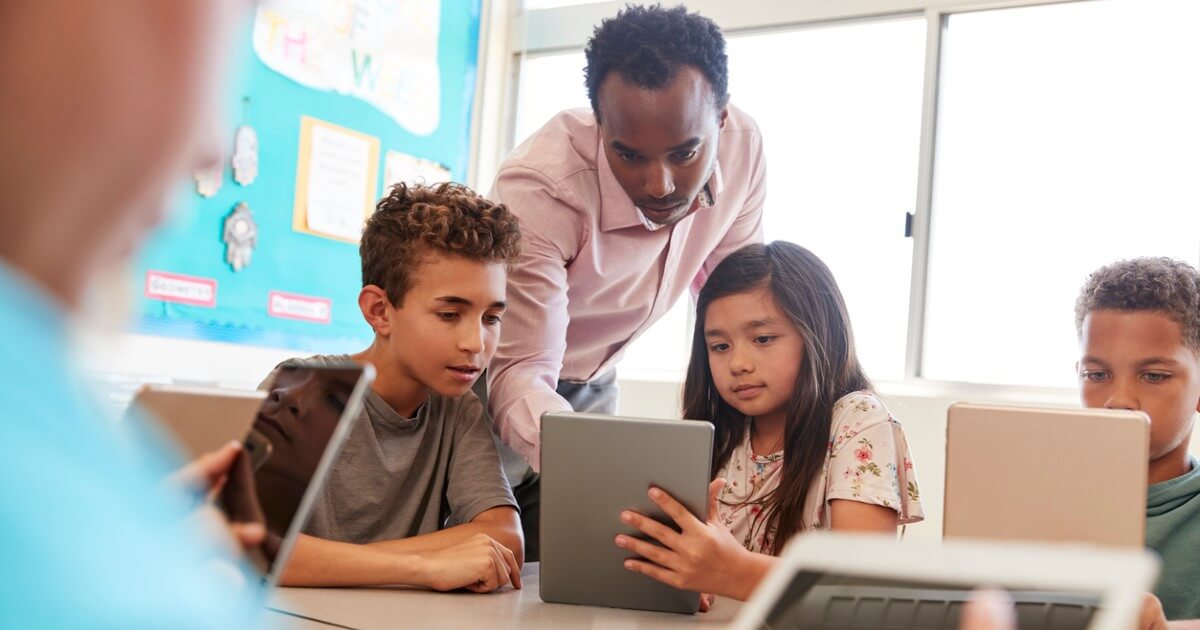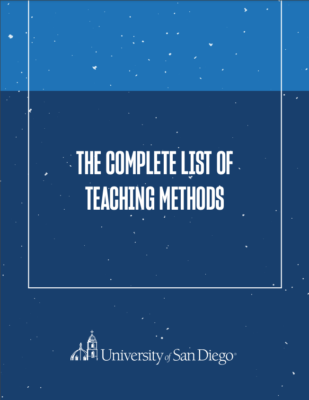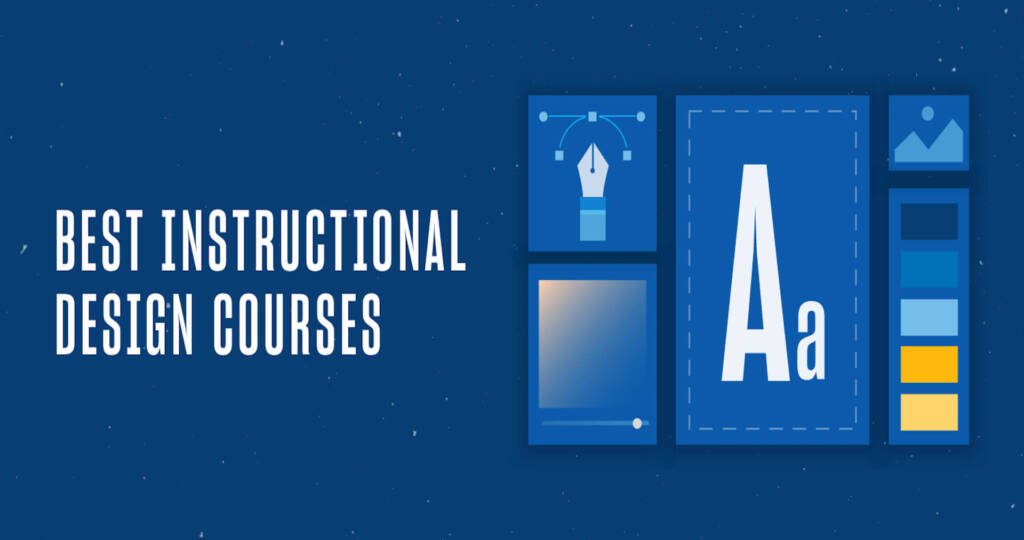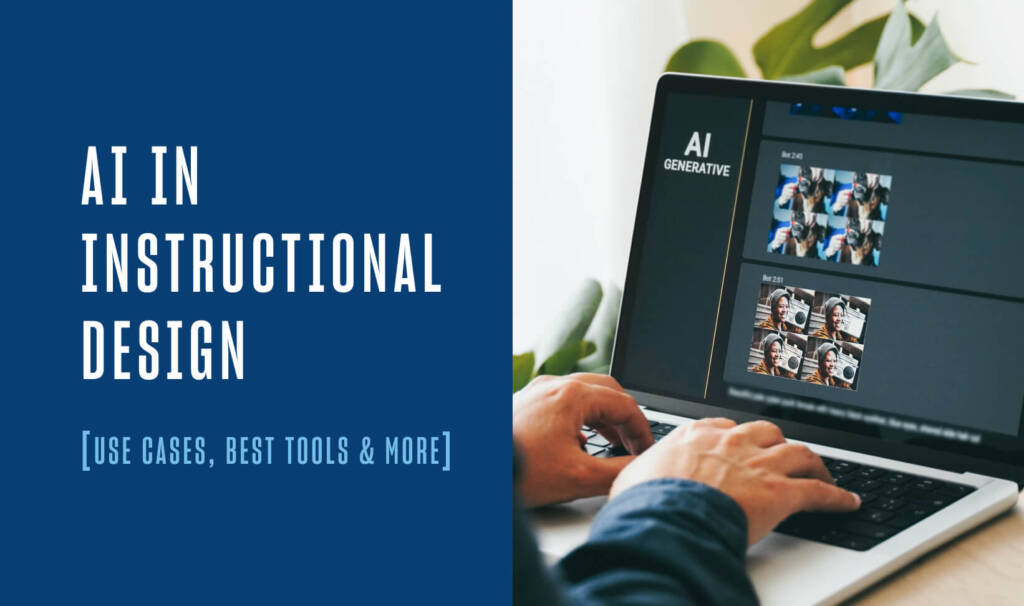Whether you’re a longtime educator, preparing to start your first teaching job or mapping out your dream of a career in the classroom, the topic of teaching methods is one that means many different things to different people.
Your individual approaches and strategies to imparting knowledge to your students and inspiring them to learn are probably built on your academic education as well as your instincts and intuition.
Whether you come by your preferred teaching methods organically or by actively studying educational theory and pedagogy, it can be helpful to have a comprehensive working knowledge of the various teaching methods at your disposal.
[Download] Get the Complete List of Teaching Methods PDF Now >>
Teaching Methods: Not as Simple as ABC
The teacher-centered approach vs. the student-centered approach. High-tech vs. low-tech approaches to learning. Flipped classrooms, differentiated instruction, inquiry-based learning, personalized learning and more.
Not only are there dozens of teaching methods to explore, it is also important to have a sense for how they often overlap or interrelate. One extremely helpful look at this question is offered by the teacher-focused education website Teach.com.
“Teaching theories can be organized into four categories based on two major parameters: a teacher-centered approach versus a student-centered approach, and high-tech material use versus low-tech material use,” according to the informative Teach.com article, which breaks down a variety of influential teaching methods as follows:
Teacher-Centered Approach to Learning
Teachers serve as instructor/authority figures who deliver knowledge to their students through lectures and direct instruction, and aim to measure the results through testing and assessment. This method is sometimes referred to as “sage on the stage.”
Student-Centered Approach to Learning
Teachers still serve as an authority figure, but may function more as a facilitator or “guide on the side,” as students assume a much more active role in the learning process. In this method, students learn from and are continually assessed on such activities as group projects, student portfolios and class participation.
High-Tech Approach to Learning
From devices like laptops and tablets to using the internet to connect students with information and people from around the world, technology plays an ever-greater role in many of today’s classrooms. In the high-tech approach to learning, teachers utilize many different types of technology to aid students in their classroom learning.
Low-Tech Approach to Learning
Technology obviously comes with pros and cons, and many teachers believe that a low-tech approach better enables them to tailor the educational experience to different types of learners. Additionally, while computer skills are undeniably necessary today, this must be balanced against potential downsides; for example, some would argue that over-reliance on spell check and autocorrect features can inhibit rather than strengthen student spelling and writing skills.
Want the Complete List of Teaching Methods Guide?
Get the Complete Guide Sent to Your Email
Diving further into the overlap between different types of teaching methods, here is a closer look at three teacher-centered methods of instruction and five popular student-centered approaches.
Teaching Methods [Teacher-Centered]
Direct Instruction (Low Tech)
Under the direct instruction model — sometimes described as the “traditional” approach to teaching — teachers convey knowledge to their students primarily through lectures and scripted lesson plans, without factoring in student preferences or opportunities for hands-on or other types of learning. This method is also customarily low-tech since it relies on texts and workbooks rather than computers or mobile devices.
Flipped Classrooms (High Tech)
What if students did the “classroom” portion of their learning at home and their “homework” in the classroom? That’s an oversimplified description of the flipped classroom approach, in which students watch or read their lessons on computers at home and then complete assignments and do problem-solving exercises in class.
Kinesthetic Learning (Low Tech)
In the kinesthetic learning model, students perform hands-on physical activities rather than listening to lectures or watching demonstrations. Kinesthetic learning, which values movement and creativity over technological skills, is most commonly used to augment traditional types of instruction — the theory being that requiring students to do, make or create something exercises different learning muscles.
Teaching Methods [Student-Centered]
Differentiated Instruction (Low Tech)
Inspired by the 1975 Individuals with Disabilities Education Act (IDEA), enacted to ensure equal access to public education for all children, differentiated instruction is the practice of developing an understanding of how each student learns best, and then tailoring instruction to meet students’ individual needs.
In some instances, this means Individualized Education Programs (IEPs) for students with special needs, but today teachers use differentiated instruction to connect with all types of learners by offering options on how students access content, the types of activities they do to master a concept, how student learning is assessed and even how the classroom is set up.
Inquiry-Based Learning (High Tech)
Rather than function as a sole authority figure, in inquiry-based learning teachers offer support and guidance as students work on projects that depend on them taking on a more active and participatory role in their own learning. Different students might participate in different projects, developing their own questions and then conducting research — often using online resources — and then demonstrate the results of their work through self-made videos, web pages or formal presentations.
Expeditionary Learning (Low Tech)
Expeditionary learning is based on the idea that there is considerable educational value in getting students out of the classroom and into the real world. Examples include trips to City Hall or Washington, D.C., to learn about the workings of government, or out into nature to engage in specific study related to the environment. Technology can be used to augment such expeditions, but the primary focus is on getting out into the community for real-world learning experiences.
Personalized Learning (High Tech)
In personalized learning, teachers encourage students to follow personalized, self-directed learning plans that are inspired by their specific interests and skills. Since assessment is also tailored to the individual, students can advance at their own pace, moving forward or spending extra time as needed. Teachers offer some traditional instruction as well as online material, while also continually reviewing student progress and meeting with students to make any needed changes to their learning plans.
Game-Based Learning (High Tech)
Students love games, and considerable progress has been made in the field of game-based learning, which requires students to be problem solvers as they work on quests to accomplish a specific goal. For students, this approach blends targeted learning objectives with the fun of earning points or badges, much like they would in a video game. For teachers, planning this type of activity requires additional time and effort, so many rely on software like Classcraft or 3DGameLab to help students maximize the educational value they receive from within the gamified learning environment.
What About Blended Learning and UDL?
Blended Learning
Blended learning is another strategy for teachers looking to introduce flexibility into their classroom. This method relies heavily on technology, with part of the instruction taking place online and part in the classroom via a more traditional approach, often leveraging elements of the flipped classroom approach detailed above. At the heart of blended learning is a philosophy of taking the time to understand each student’s learning style and develop strategies to teach to every learner, by building flexibility and choice into your curriculum.
Universal Design for Learning (UDL)
UDL incorporates both student-centered learning and the “multiple intelligences theory,” which holds that different learners are wired to learn most effectively in different ways (examples of these “intelligences” include visual-spatial, logical-mathematical, bodily-kinesthetic, linguistic, musical, etc.). In practice, this could mean that some students might be working on a writing project while others would be more engaged if they created a play or a movie. UDL emphasizes the idea of teaching to every student, special needs students included, in the general education classroom, creating community and building knowledge through multiple means.
Want a Copy of This Article as a PDF?
Get the Complete List of Teaching Methods Guide Sent to Your Email
Teaching Methods: A to Z
In addition to the many philosophical and pedagogical approaches to teaching, classroom educators today employ sometimes highly creative methods involving specific strategies, prompts and tools that require little explanation. These include:
- Appointments with students
- Art-based projects
- Audio tutorials
- Author’s chair
- Book reports
- Bulletin boards
- Brainstorming
- Case studies
- Chalkboard instruction
- Class projects
- Classroom discussion
- Classroom video diary
- Collaborative learning spaces
- Creating murals and montages
- Current events quizzes
- Debates
- Designated quiet space
- Discussion groups
- DIY activities
- Dramatization (plays, skits, etc.)
- Educational games
- Educational podcasts
- Essays (Descriptive)
- Essays (Expository)
- Essays (Narrative)
- Essays (Persuasive)
- Exhibits and displays
- Explore different cultures
- Field trips
- Flash cards
- Flexible seating
- Gamified learning plans
- Genius hour
- Group discussion
- Guest speakers
- Hands-on activities
- Individual projects
- Interviewing
- Journaling
- Laboratory experiments
- Learning contracts
- Learning stations
- Lecturing
- Literature circles
- Making posters
- Math games
- Mock conventions
- Motivational posters
- Music from other countries/cultures
- Oral reports
- Panel discussions
- Peer partner learning
- Pen pals
- Photography
- Problem solving activities
- Reading aloud
- Readers’ theater
- Recitation
- Reflective discussion
- Research projects
- Rewards & recognition
- Role playing
- School newspapers
- Science fairs
- Scrapbooks
- Sister city programs
- Spelling bees
- Storytelling
- Student podcasts
- Student portfolios
- Student presentations
- Student-conceived projects
- Supplemental reading assignments
- TED talks
- Team-building exercises
- Term papers
- Textbook assignments
- Think-tac-toe
- Time capsules
- Timelines
- Use of community or local resources
- Video creation
- Video lessons
- Vocabulary lists
- Web quests
- Word walls
- Workbooks
For the Love of Teaching
So, is the teacher the center of the educational universe or the student? Does strong reliance on the wonders of technology offer a more productive educational experience or is a more traditional, lower-tech approach the best way to help students thrive?
Questions such as these are food for thought for educators everywhere, in part because they inspire ongoing reflection on how to make a meaningful difference in the lives of one’s students.
Want a Copy of This Article as a PDF?
Get the Complete List of Teaching Methods Guide Sent to Your Email





